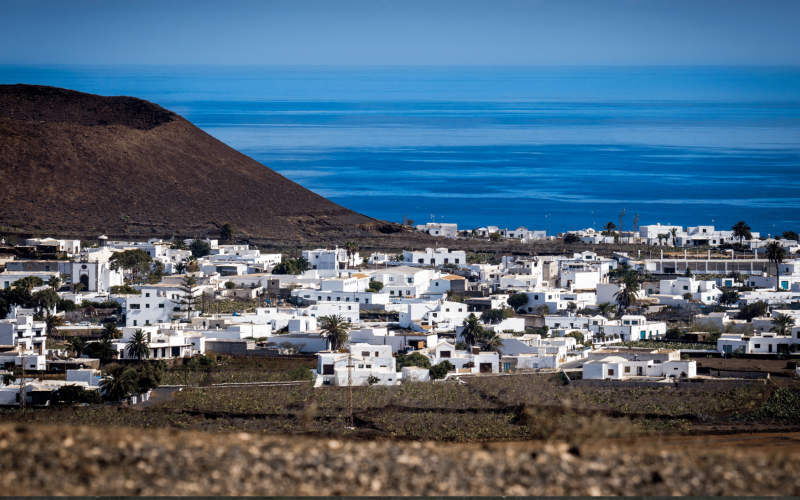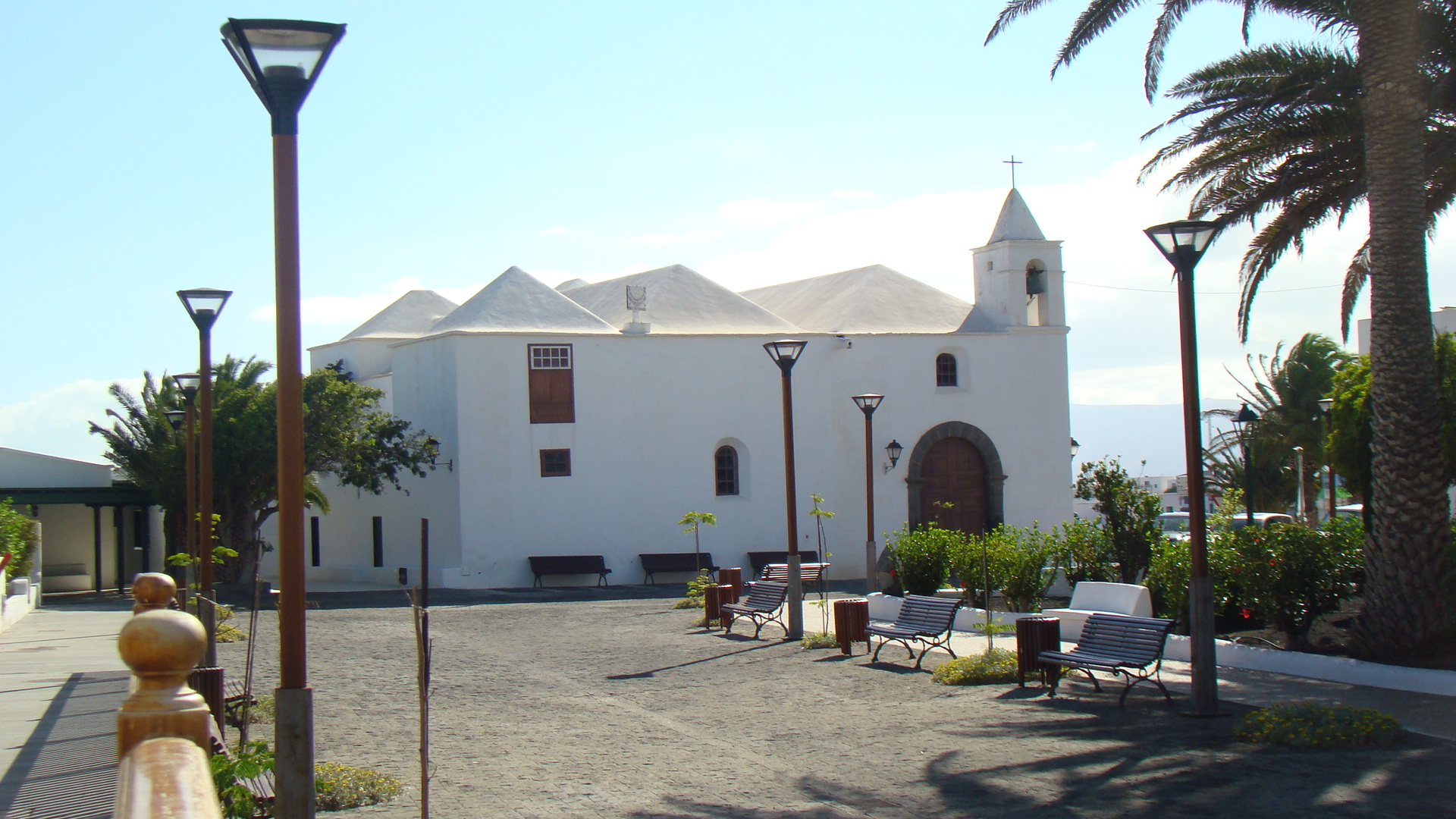Hermitage of San Roque
Hermitage of San Roque
The Church of San Roque is located in the urban centre of Tinajo. In front of the main entrance there is a square that bears the same name as the Saint. This church was built as a hermitage in the second half of the 17th century (1679) under the patronage of San Roque by the beneficiary and vicar of the island of Lanzarote Guillén de Bethencourt. It was enlarged around 1738, and converted into the second parish of the island on 29 June 1792, by the prelate Antonio Tavira y Almanzan. Around 1800 it underwent new reforms that meant its enlargement and improvement. The building is made up of two unequal naves in keeping with the gabled roof, two chapels, a sacristy with a hipped roof, a storeroom, a baptistery housed in a small chapel (configured with a lattice door). At the back there is the choir with a wooden floor and balustrade, forming a second floor. The entrance doors on the south and east façades are framed by a set of arches made of basalt stone and red tuff. The entrance to the church through the south door is through a gate with two oval lamps. The ceiling is Mudejar with painted motifs in which turquoise predominates. The altar area of the central nave has a polygonal white ceiling. The gospel nave retains the original stone pavement. The interior of the building has a set of semicircular arches and Tuscan columns. The roof is made of traditional-style cake, with a side eaves of painted limestone. The walls are made of laid stone with mud and straw on the inside, and the outside with lime or cement mortar as a result of relatively recent repairs. On the outside of the parish church of San Roque we can see one of the most valuable scientific and heritage jewels of the Canary Islands: the sundial. According to one of its inscriptions, this piece was placed on May 20, 1851, by F. R. Fernández. A century and a half later, it continues to be a silent witness to several generations, to the daily events and to the thousands of conversations that take place under its old but still firm mast. The initials F. R. Fernández correspond to a resident of the Vegueta area, a professional sailor who, on one of his last trips to the African coast, built the clock on the ship and gave it to the church of San Roque de Tinajo in 1851, according to D. Francisco Spinola, who for more than 40 years has taken care of its care, a task entrusted to him by D. Tomás, his uncle and parish priest of the church of San Roque since the beginning of the 20th century. There are other names related to this jewel, such as that of Mr. Sebastián Jiménez Sánchez, provincial delegate of archaeological excavations, who, referring to the clock in the sixties, wrote a letter to the parish priest suggesting “that the clock be preserved as always. It may be the only one in the Canary Islands. I took note of it and I plan to write an article about it shortly.” These clocks, condemned to disappear due to the appearance of new technologies, were for a long time guardians of the punctuality of this unique rural town. Their hourly marks go from six in the morning to six in the afternoon, and each hour is subdivided into four quarters of an hour. As the Roman numbering is not used (taking into account the date of its dating) it is possible to think that this was changed in one of the repairs carried out over these 150 years. According to statements by Mr. Francisco Spinola, in the last forty long years that he has cared for this Clock, three repairs have been made to it. Note: When we look at the time on a sundial, we are measuring the true local time, that is, the time indicated by the Sun in the place where we are. It does not usually coincide with civil time because the latter responds to more economic and political criteria.


